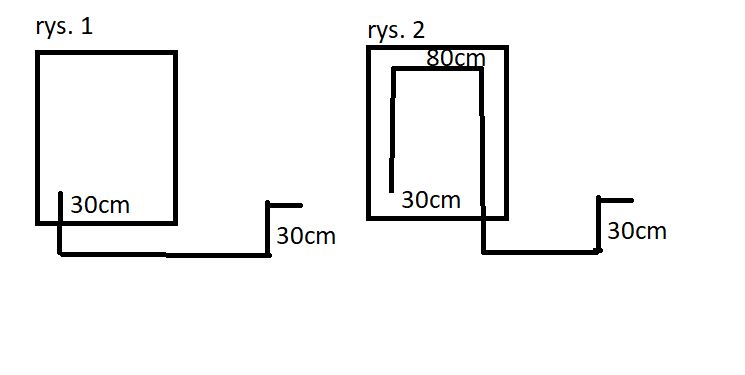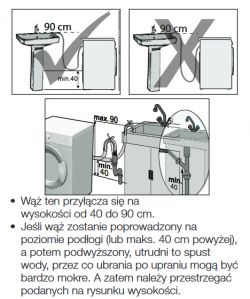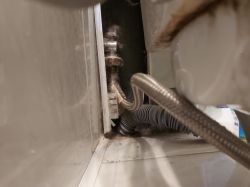I have this question for you, how to connect/plumb the drain hose to the washing machine correctly.
The hose comes out of the washing machine at a height of 30cm from the floor. The waste pipe where the hose enters is also at this height (possibly 3cm higher).
The picture below shows two options for how I can route it.
Fig.1
Hose from the washing machine straight to the floor, across the floor about 1m and up 30cm to the sewer pipe.
Fig.2
Hose from the washing machine upwards along the brackets mounted in the washing machine to a height of 80cm from the floor and then down to the floor itself, then along the floor about 1m and up 30cm to the sewer pipe.
Which option should I choose. I ask because it seems to me that the washing machine goes too loud when pumping water out and it is new.
Thank you in advance for your answer or to present yet another alternative version

The manual from the washing machine shows such a drawing:
 .
.
The hose comes out of the washing machine at a height of 30cm from the floor. The waste pipe where the hose enters is also at this height (possibly 3cm higher).
The picture below shows two options for how I can route it.
Fig.1
Hose from the washing machine straight to the floor, across the floor about 1m and up 30cm to the sewer pipe.
Fig.2
Hose from the washing machine upwards along the brackets mounted in the washing machine to a height of 80cm from the floor and then down to the floor itself, then along the floor about 1m and up 30cm to the sewer pipe.
Which option should I choose. I ask because it seems to me that the washing machine goes too loud when pumping water out and it is new.
Thank you in advance for your answer or to present yet another alternative version

The manual from the washing machine shows such a drawing:
 .
.



